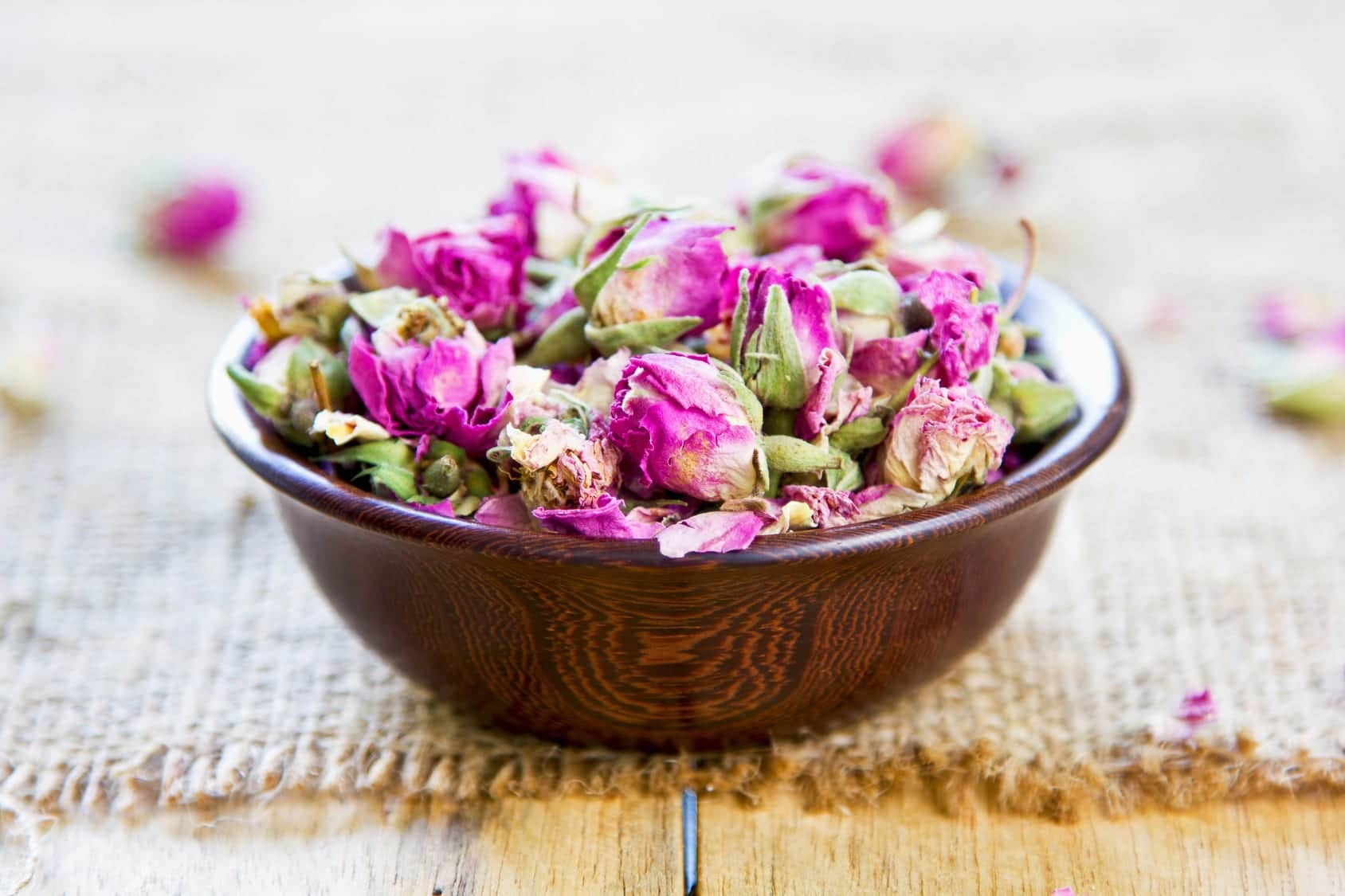One of the suggestions from Herbal Remedy Kit owners was for ideas for herbal gifts that grandparents could make with their grandchildren.
These are simple projects that you can do with children. Here we’ll learn how to make potpourri and sachets.
This first idea is making herbal potpourris and sachets as a way of introducing children to a variety of herbs – their colors, scents, textures, and even some of their healing properties.
I tried it today with two teenagers, a 7-year old and a 2-year old, and it was VERY fun! They were all wondering how to make potpourri.
What you’ll need…
For this project you will need a variety of dried flowers, leaves, seeds, and barks and peels, and/or spices.
You will also need powdered or chopped orris root or calamus root to help preserve the look and smell of the other ingredients.
You can also choose to add a few drops of an essential oil of your choice.
If you are going to make sachets, you will need small drawstring bags made from muslin, cotton, silk, or lace.
Potpourris can be placed in bowls as scented decorations in your home. Sachets can be placed in drawers with sweaters, gloves, lingerie, and linens to give them a beautiful scent. They can also be hung on hangers under dresses and shirts or even placed inside shoes, or put into suitcases or in the pockets of winter coats being stored through the summer.

For those who want to learn how to make poutpourri, the first step in this project is for the adult involved to create a beautiful display of herbal ingredients.
Here we’ve just gathered the things we had in our house already: dried calendula blossoms, lemon balm leaves, chamomile flowers, pearly everlasting flowers, peppermint leaves, dried rose buds and petals, lavender flowers, rosemary, red clover flowers, self heal blossoms, fennel seeds, cinnamon, cloves, allspice, nutmeg, cardamom pods, and bay leaves. Arrange them on a plate or tray.
If you need any of these herbs, purchasing them here supports our business. However, if you have a local herb shop, please support them.
Now, place the plate where the children can reach it, and spend some time exploring the scents and colors of all the different choices the children have before them.
Ask them if they know what any of the plants are. What part of the plant is on the plate?
Flower petals, seeds, etc.?
Talk with them about what you know about each of the different herbs.
Are they soothing herbs? Stimulating? Warming? Cooling? (I asked which plants they would put in someone’s bedroom to help them sleep and which they would put in a blend they would have out at party.)
What scents do they like? Dislike?
Next choose your project.
Since you wanted to know how to make poutpourri, you might also want to learn to make an herbal sachet. So, are you going to make a potpourri or a sachet?
Will it be put in a drawer with clothes, set out on a holiday table, placed by someone’s bedside to help them fall asleep, hung in the kitchen to keep away flies?
Children might enjoy thinking of the people they’d like to make a sachet for and what purpose they would like it to serve.
Once you know what they would like to make, point out some choices of herbs that would be good for the purpose they’ve chosen. If they’re making a potpourri, remind them that making it look beautiful is as important as the smell and purpose.
Help them see that some ingredients may be chosen more for color, others for scent, still others for their particular properties.
I’ll give a few ideas here to get you started, but really this is a project designed to allow you and the children to play and be creative together with the herbs.
An insect repellent blend might include: lavender, rosemary, southernwood, spearmint, santolina, pennyroyal, tansy, mugwort, cedarwood chips…
A soothing potpourri blend might include: lemon balm, lemon verbena, rose petals, lavender, calendula, meadowsweet, chamomile…
For sachets tucked in with clothes you might try rose and lavender mixes or a blend of citrus peel, spearmint, lemon verbena, and thyme, with a drop or two of pine essential oil.
How to make potpourri…
 Give each child a small non-metallic bowl or cup and allow her to create her own blend.
Give each child a small non-metallic bowl or cup and allow her to create her own blend.
Today we were making sachets for putting in drawers with clothes.
Rowan chose Peppermint, Lemon Balm, Bay, Rose, Lavender, Chamomile, and Cinnamon. Hailey (my 2-year old) chose Nutmeg, Rose petals, Lemon Balm, and Chamomile. Zac (17) chose Rose hips, Rose petals, Lavender, Allspice, and Bay.
It was so fun watching them smell and explore and choose what to mix, and guess what…they all smelled great!
Stir in 1 teaspoon of orris or calamus root per cup of dried herbal mixture. They can mix it together with their hands.
Add essential oils if you so desire. Add them sparingly so as not to completely cover the scents of the other herbs.
If making sachets, go ahead and transfer the herbs into the small bags.
Place your finished gifts into a sealed container and store in a warm, dry, dark place for a few weeks to cure.
In our family, our children each keep a small box under their beds where they place their hand-made gifts for family and friends until gift giving time arrives. This would be one perfect place for the herbs to cure.
For those who wanted learn how to make poutpourri or herbal sachets, we hoped this helped!









